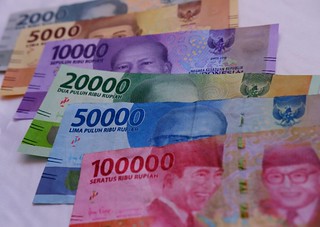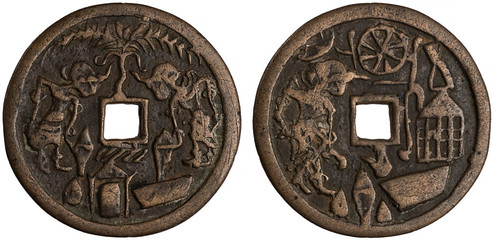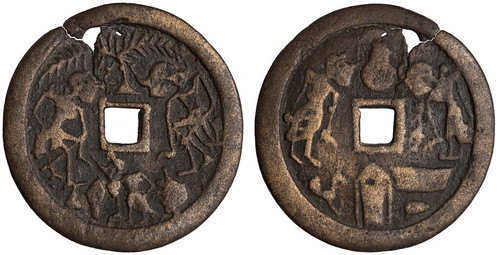
PREV ARTICLE
NEXT ARTICLE
FULL ISSUE
PREV FULL ISSUE
INDONESIA'S MAGIC MONEYAmerican Numismatic Society Assistant Librarian Jared Goldfarb published an ANS Pocket Change blog article about curses on money in Indonesia. Here's an excerpt - see the complete article online. -Editor
Regarding the idea that money is used as a medium for transferring curses and misfortune, I found very little information aside from that the custom stems from local superstitions and folklore. For example, I found several popular news articles with roughly translated titles such as, Scary folklore aside, I did find information on a real, historical tradition of magic money on Java dating to the Majapahit period (13th-16th century). The earliest mentions what are now referred to as magic coins appeared in Thomas Stamford Raffles' 1817 work, The History of Java (?vol. 1, p. 376), where they were described as bearing traditional Javanese wayang shadow puppet characters (Fig. 2). Raffles' contemporary, William Marsden, added that they appeared to be Chinese in nature (Cribb, 22). That being said, their non-monetary functions were not clear to Raffles and Marsden at the time (Cribb, 69). More recently, the task of explaining Indonesia's magic coins (Fig. 3) was undertaken by Joe Cribb in his 1999 publication, Magic Coins of Java, Bali, and the Malay Peninsula: Thirteenth to Twentieth Centuries. Figure 3. Examples of Indonesian gobog magic coins. (top) ANS 1911.105.497. (bottom) ANS 1916.69.35. Photos: Alan Roche, ANS. According to Cribb, the earliest magic coins in Indonesia most likely date to the 13th century (early Majapahit period) and would have been made from the recast metal of Chinese cash coins that had become abundant in the region by then (Cribb, 54). Following the arrival of Europeans in the region in the 17th century, Spanish and British coins became additional bases for magic coins, which were still being made well into the 1990s when Cribb completed his book (Cribb, 53) (Fig. 4).
To read the complete article, see:
Wayne Homren, Editor The Numismatic Bibliomania Society is a non-profit organization promoting numismatic literature. See our web site at coinbooks.org. To submit items for publication in The E-Sylum, write to the Editor at this address: whomren@gmail.com To subscribe go to: https://my.binhost.com/lists/listinfo/esylum All Rights Reserved. NBS Home Page Contact the NBS webmaster 
|


